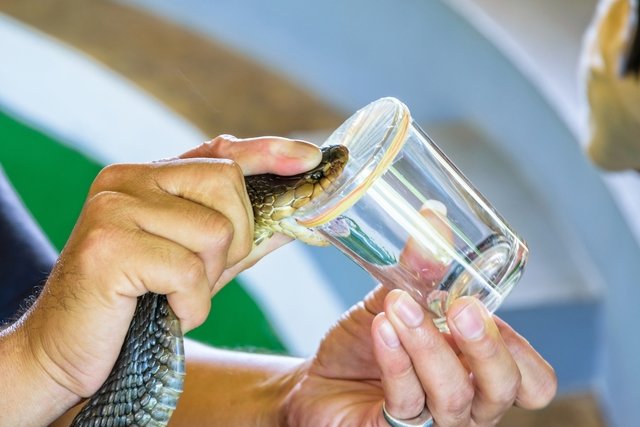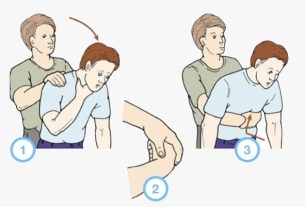The most important thing after a snake bite is to keep the limb that was bitten as still as possible, because the more it moves, the more the venom can spread throughout the body and reach various vital organs. This also applies to any activity that can accelerate the heartbeat, as increased blood circulation also spreads the poison.
Therefore, ideally, the victim should not walk and be transported by stretcher to the hospital. Another option is to call medical help via 192.

Until you reach the hospital or until medical help arrives, what you should do to improve your chances of rescue are:
- Wash the area with soap and waterto clean the wound and prevent more poison or microorganisms from entering;
- Tie a piece of fabric a few centimeters above the site of the snake bite. However, you should not tie it too tightly because it can cause further complications, and if it has been more than half an hour since the snake bite, you should not tie it.
Most snakes in Brazil do not have venom and, therefore, the bite is not dangerous to health, however, in any case it is always important to go to the hospital to inform the characteristics of the snake and confirm and identify if it really was venomous. or not. If it has been bitten by a venomous snake, an antidote to the venom is usually administered so that the injuries stop occurring.
If it is not possible to transport the snake to the hospital, it is advisable to take note of its main characteristics, such as color, pattern, head shape and size, or take a photo.
What not to do after the bite
There are several popular beliefs about what to do after a snake bite, however, it is advised against:
- Try to suck the venom out of the bite;
- Make a tight tourniquet;
- Cut the bite site;
Furthermore, you should also not apply any type of homemade mixture to the bite, as not only is there no scientific proof, but it could end up causing an infection in the area.
How to know if the snake is poisonous or not
Although it is not a completely effective method, there are some characteristics that can help distinguish a venomous snake from a non-venomous or non-venomous snake. Some of these features include:
In any case, it is always important to go to the hospital to carry out a general assessment of vital signs and ensure that there are no changes that could put your life at risk.
Symptoms of a venomous snake bite
In the case of a venomous snake bite, with venom injection, it is common that, after the pain that appears at the site due to the bite, other symptoms may appear, such as:
- Pain that worsens over time;
- Swelling that increases and affects more areas around the bite;
- Sore tongue in places close to the bite. For example, in the arm it is possible for swelling of the armpit areas, while in the leg the groin areas may become inflamed;
- Blisters on the skin;
- Nausea and vomiting;
- Dizziness, feeling of general malaise and fainting.
However, these symptoms can vary according to the species of snake, and there are even some venomous snakes in which the bite does not cause any symptoms. Therefore, it is always important to go to the hospital, even if you suspect that the snake is not actually venomous.
Bibliography
- WHO. Guidelines for the management of snake-bites. 2010. Available at: <http://apps.searo.who.int/PDS_DOCS/B4508.pdf>. Accessed on June 18, 2019
- TEXAS MASTER NATURALIST. Snake Bite First Aid. Available at: <https://txmn.org/elcamino/files/2010/03/Snake-article-1.pdf>. Accessed on June 18, 2019
- MAYO CLINIC. Snakebites: First aid. Disponível em: <https://www.mayoclinic.org/first-aid/first-aid-snake-bites/basics/art-20056681>. Acesso em 18 jun 2019

Sign up for our newsletter and stay up to date with exclusive news
that can transform your routine!
Warning: Undefined array key "title" in /home/storelat/public_html/wp-content/plugins/link-whisper-premium/templates/frontend/related-posts.php on line 12
Warning: Undefined array key "title_tag" in /home/storelat/public_html/wp-content/plugins/link-whisper-premium/templates/frontend/related-posts.php on line 13



